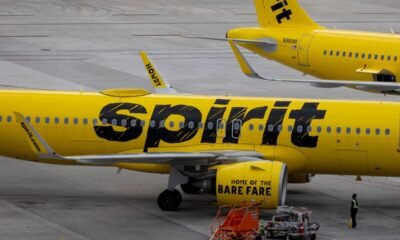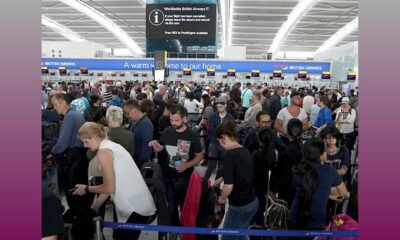For the first time in several months, India’s domestic air passenger traffic fell in July 2025. According to the latest DGCA data, 126 lakh passengers flew within the country during the month, down 2.9% compared to 129.8 lakh in July 2024.
Airlines also struggled with lower load factors; a key measure of how full flights are. The Air India group’s load factor dropped to 78.6% in July from 81.5% in June. IndiGo, India’s largest carrier, slipped to 84.1% from 85.4%. Akasa Air reported 90.2%, slightly lower than 91.4%, while SpiceJet recorded 84.2% against 85.2% in the same period.
When it comes to market share, IndiGo strengthened its dominance. Its share rose to 65.2% in July from 64.5% in June. Akasa Air improved marginally to 5.5%, while SpiceJet edged up to 2%. In contrast, the Air India group lost ground, dropping to 26.2% from 27.1%.
IndiGo’s parent company, InterGlobe Aviation Ltd, posted a consolidated net profit of INR 2,176 crore for the first quarter of FY26, down 20.2% year-on-year. Its revenue grew 4.7% YoY to INR 20,496 crore, missing expectations of INR 21,150 crore. EBITDA rose 1.3% to ₹5,226 crore, while operating margin slipped to 25.5% from 26.4% last year.
Meanwhile, other airlines struggled with losses. For FY25, Air India and Air India Express posted a combined loss before tax of INR 9,568.4 crore, according to provisional figures shared by the Civil Aviation Ministry. Akasa Air reported a pre-tax loss of INR 1,983.4 crore, while SpiceJet recorded a much smaller loss of INR 58.1 crore.
The July decline signals that after months of strong growth, domestic air travel demand may be entering a cautious phase. Seasonal factors such as the monsoon, softer leisure travel, and higher fares on some routes may have contributed to the dip. Capacity constraints and rising costs have also put pressure on airlines.
Strategically, this cooling-off period is a reminder that India’s aviation boom, while strong in the long run, is not immune to short-term headwinds. Airlines that can balance costs, maintain high fleet utilisation, and tap into demand during slower months will be better placed to withstand such fluctuations.











































